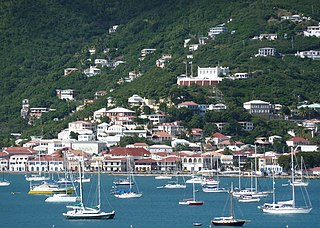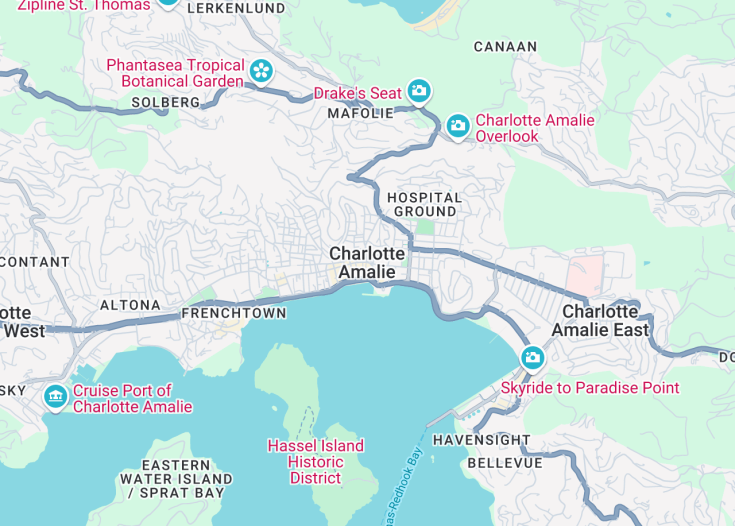Charlotte Amalie, the capital of the U.S. Virgin Islands, offers a perfect blend of historical allure and modern leisure. Nestled on the island of St. Thomas, this picturesque harbor city captivates with its vibrant architecture, steeped in Danish colonial history, and bustling waterfront. Visitors can explore the charming streets lined with duty-free shops, historic sites like Fort Christian, and the famous 99 Steps, or unwind on the pristine beaches nearby. The city’s rich history and panoramic Caribbean views make it a must-visit destination for culture and nature enthusiasts alike.
When visiting Charlotte Amalie, prioritize a walking tour of the historic district to truly appreciate the city’s Danish architecture and vibrant street scenes.
Consider timing your visit with one of the local festivals to experience Charlotte Amalie’s culture through music, dance, and traditional Virgin Islands cuisine.
Top things to do & see in Charlotte Amalie
Select the following sights and activities to discover best tickets and tours available in Charlotte Amalie.
Charlotte Amalie: Alluring History and Stunning Views
| Country | U.S. Virgin Islands |
| Time in Charlotte Amalie | GMT-4 |
| Language spoken | English |
| Population | 18,481 (source: U.S. Census Bureau) |
| Currency | U.S. Dollar (USD $) |
| Airports | Cyril E. King Airport (2 mi / 3.2 km). |
Charlotte Amalie, the capital of the U.S. Virgin Islands, is situated on the harbor of Saint Thomas and is renowned for its rich colonial history and vibrant Caribbean culture. This town is named after a Danish queen and exudes a charming blend of Danish and West Indian architecture that attracts many tourists. Visitors are greeted with cobblestone streets lined with vividly painted buildings and historical landmarks such as Fort Christian, the oldest standing structure in the Virgin Islands.
The harbor area is not only visually stunning but also historically significant, as it used to be one of the busiest ports and trading centers in the Caribbean. Today, it’s a popular destination for cruise ships and a center for shopping and dining. The bustling waterfront offers an array of duty-free shops selling jewelry, perfumes, spirits, and souvenirs, making it a paradise for shoppers.
Moreover, Charlotte Amalie is also a gateway to stunning natural attractions. The picturesque Magens Bay Beach, known for its turquoise waters and powdery sand, is just a short drive away. The Coral World Ocean Park and the Skyride to Paradise Point also offer memorable experiences with breathtaking views of the Caribbean.
Culturally, the city thrives with its pulsating music scene, featuring sounds ranging from calypso tunes to the beat of steel drums. The local cuisine, with its blend of African, European, and American flavors, offers a gastronomic delight, especially with its seafood specialties.
The town’s small size belies its historical significance. Storied buildings and pirate legends add to the allure, making Charlotte Amalie not just a stopover, but a deep dive into the heart of the Caribbean’s past and present.
Where is Charlotte Amalie?
Charlotte Amalie is located on the southern shore of the island of Saint Thomas in the Caribbean. It’s nestled in a deep harbor that was historically significant in maritime commerce.
Distances:
| Route | Distance by car | Time by car |
|---|---|---|
| Red Hook to Charlotte Amalie | 7 miles | 20 minutes |
| Cruz Bay to Charlotte Amalie | 15 miles | 1 hour (incl. a short ferry ride) |
What is Charlotte Amalie famous for?
Charlotte Amalie is famous for its historical architecture, vibrant shopping districts, and stunning harbor views. It also boasts a rich history rooted in the Age of Piracy and Danish colonialism.
History
Pre-Colonial Era (Before 1493)
The history of Charlotte Amalie begins long before its foundation by European colonizers. The area was originally inhabited by indigenous peoples, including the Caribs and the Arawaks. These communities thrived through fishing, agriculture, and regional trade. Their presence is still felt through archaeological sites that offer a glimpse into their way of life and spirituality.
Spanish Discovery (1493-1671)
Charlotte Amalie’s modern history begins with the arrival of Christopher Columbus in 1493, who claimed the island for Spain. The area, however, did not see significant Spanish development, as it served primarily as a waypoint and refueling station for Spanish galleons traveling back to Europe loaded with treasures from the Americas.
Danish Colonization (1671-1917)
The transformation of Charlotte Amalie occurred when Denmark, seeking to expand its colonial outposts, established its control over the island in 1671 and subsequently founded the town in 1681 as a trading post. Named after the Queen of Denmark, Charlotte Amalie flourished as a key port in the transatlantic slave trade and later in the sugar cane trade. The Danish built remarkable architectural structures, many of which still characterize the town’s panorama, including Fort Christian, the oldest standing structure in the Virgin Islands.
American Period (1917-Present)
The strategic importance of the Virgin Islands, recognized during the conflicts of World War I, led the United States to purchase the islands from Denmark in 1917. Charlotte Amalie then shifted from a colonial economy to a tourism-centered economy. Today, it serves as the capital of the U.S. Virgin Islands and is a bustling port, hosting cruise ships from around the globe. Its rich history and vibrant mix of Danish colonial architecture, alongside American influences, create a unique cultural atmosphere that continues to evolve.
Visit Charlotte Amalie
What to see and do in Charlotte Amalie, U.S. Virgin Islands.
Charlotte Amalie is not only steeped in rich history but also offers a variety of attractions and activities for visitors. Noteworthy sites include:
- Fort Christian: A historical fort that houses a museum showcasing Virgin Islands’ heritage.
- Emancipation Garden: A public park commemorating the emancipation of slaves in 1848.
- 99 Steps: A famous stairway made from the bricks that were originally used as ballast on European ships.
- Magens Bay: Known for its stunning beach, which is often listed among the world’s top beaches.
- Charlotte Amalie’s Historical District: Explore the colonial architecture and vibrant shopping areas.
Festivals in Charlotte Amalie
Charlotte Amalie hosts several cultural events and festivals throughout the year, including:
- The St. Thomas Carnival: A vibrant celebration with parades and music occurring every April/May.
- The Mango Melee in July: A fun festival dedicated to the mango, featuring tastings, competitions, and crafts.
- Christmas Festivities: Experience unique local traditions and joyous celebrations during December.
Best time to visit Charlotte Amalie
The ideal time to visit Charlotte Amalie is between December and April. During these months, the weather is most favorable, and the town buzzes with activities and festivals, providing a lively cultural experience.
Is Charlotte Amalie worth visiting?
Charlotte Amalie is undoubtedly worth visiting. It combines historical depth, scenic beauty, and a vibrant local culture that offers a unique Caribbean experience. Whether you’re a history enthusiast, a beach lover, or a shopping aficionado, Charlotte Amalie has something to cater to all tastes.









